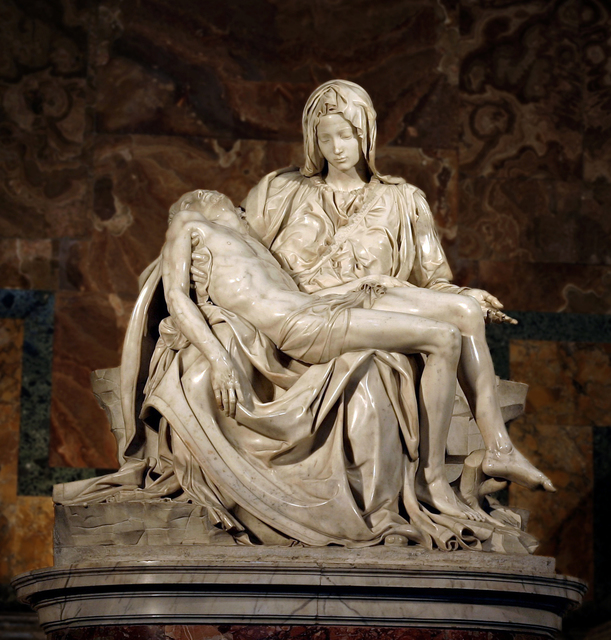
The Pieta
Very few people know that the golden roof, the marble walls and the majestic halls of the Vatican is not the exclusive preserve of the Roman Catholic Church. Aside being designated as one of United Nations’ heritage sites, major work cannot be done on any of its breathtaking features without the ‘apparent’ permission of the Italian government. A typical example was when the Vatican proposed a repainting of the ages old Sistine Chapel, which, as it were, would affect two of Michelangelo’s breathtaking frescos: The Last Judgment and The Creation of Adam. Of course, the Italian government reminded the Vatican that those frescos are untouchable.
The Vatican is a must-visit for a number of reasons, including: pilgrimage, tourism, and education. As a great pilgrimage center, it plays host to the burial chamber of St. Peter; St. Paul was martyred there too. And Emperor Nero and his likes had fun slaughtering the early Christians in the nearby Roman Colosseum. As a tourist site, millions of people visit the Vatican to behold the genius of Pope Julius II and the ingenuity of Michelangelo – with the Sistine Chapel frescos and the Pietà (artwork depicting the body of Jesus on the lap of his mother Mary after crucifixion) standing out; even the dome of St. Peter’s Basilica was Michelangelo’s handiwork; he even designed the uniform of the Vatican’s Swiss Guard (her elite military force). Of course, the Vatican is home to the great pontifical universities, especially the Urbanian.
Michelangelo’s Pietà speaks to us today. Yes, it speaks, and yet speaks. It eternally speaks the message left in her by its sculptor, the finest one the world has ever known – Italian Michelangelo Buonarroti. What is this message? It is this: When we give not just our best but our all to our craft, then the worst output we can get is ‘near perfection’. The Pietà itself is perfect art. Take a look at the picture again.
Lessons >> How did Michelangelo do it?
- Pietà wasn’t his first work: Usually people want to hit world class at the very first instance. No! You can trust that Pietà wasn’t his 1000th He had been in the game of painting and sculpting for God-knows-how-long before turning out the Pietà and the Sistine Chapel frescos.
- Commitment to Excellence: Pietà is breathtaking because of the excellence it embodies. And excellence don’t just pop up from the blues; someone had to exemplify it. Michelangelo chose to. So, too, can each and every one of us.
- Patience is a virtue: A look at Pietà would suggest it was done in ages – about a year actually. In fact, all the details of the human art form were given to the very last detail. Without patience, little can be achieved and excellence would remain unreachable. So, to really get the details out and exemplify excellence, patience is nonnegotiable. Patience gives the world time to reset in our favour; nurtures genius and bolsters creativity. Whenever we’re not patient, we’re more or less compelling time, things and people to offer what they don’t yet have – but will soon have. Why not wait for that mango fruit to ripen by morning? Why insist on having it now?
- Great works live on: For being a great piece of art, Pietà is a globally relevant artifact – and Catholic religious icon. It is priceless to say the least. Millions of people from all over the world troop to see it every year. If Pietà were not that amazing, who will even care about its name? Perhaps only the Basilica’s cleaners. And so, Pietà inspires us to do great works, with the realization that they stand the chance of being transgenerational.
[…] Source: PIETÀ SPEAKS: 4 Lessons from this Michelangelo’s masterpiece […]
LikeLike
That he was committed, patience etc is enough lesson to us all and his good works speaks for itself that the fight for its preservation is not in the hand of Michangelo.
Ages upon ages the great work remain unfaded.
I think that a Patient dog will eat the fat meat…
LikeLike
Great observation there, Austine. Especially this: having done an excellent piece, lovers of excellence will commit to safeguarding it.
LikeLike
I commend you for not attributing Michelangelo’s immortal works to talent… many would do just that.
LikeLike
Peter, thanks.
LikeLike
Thanks, Peter. Yes, talent is never enough, as genius is a product of relentless effort & uncommon devotion.
LikeLike